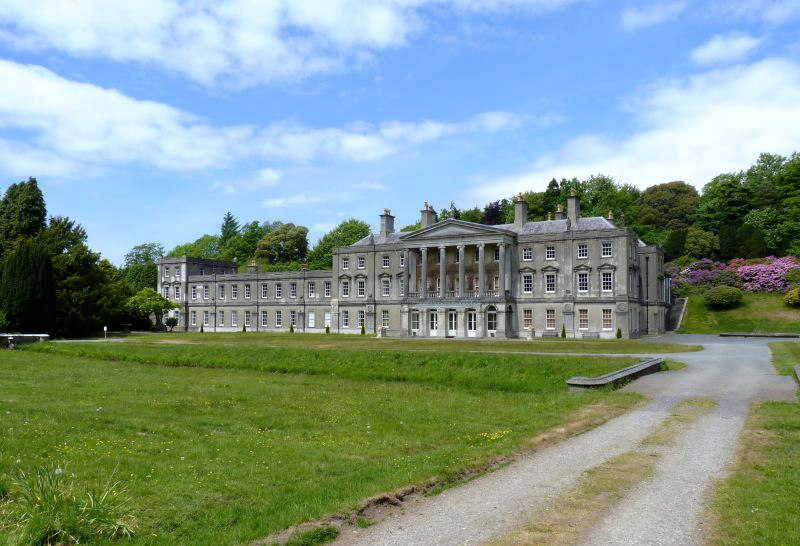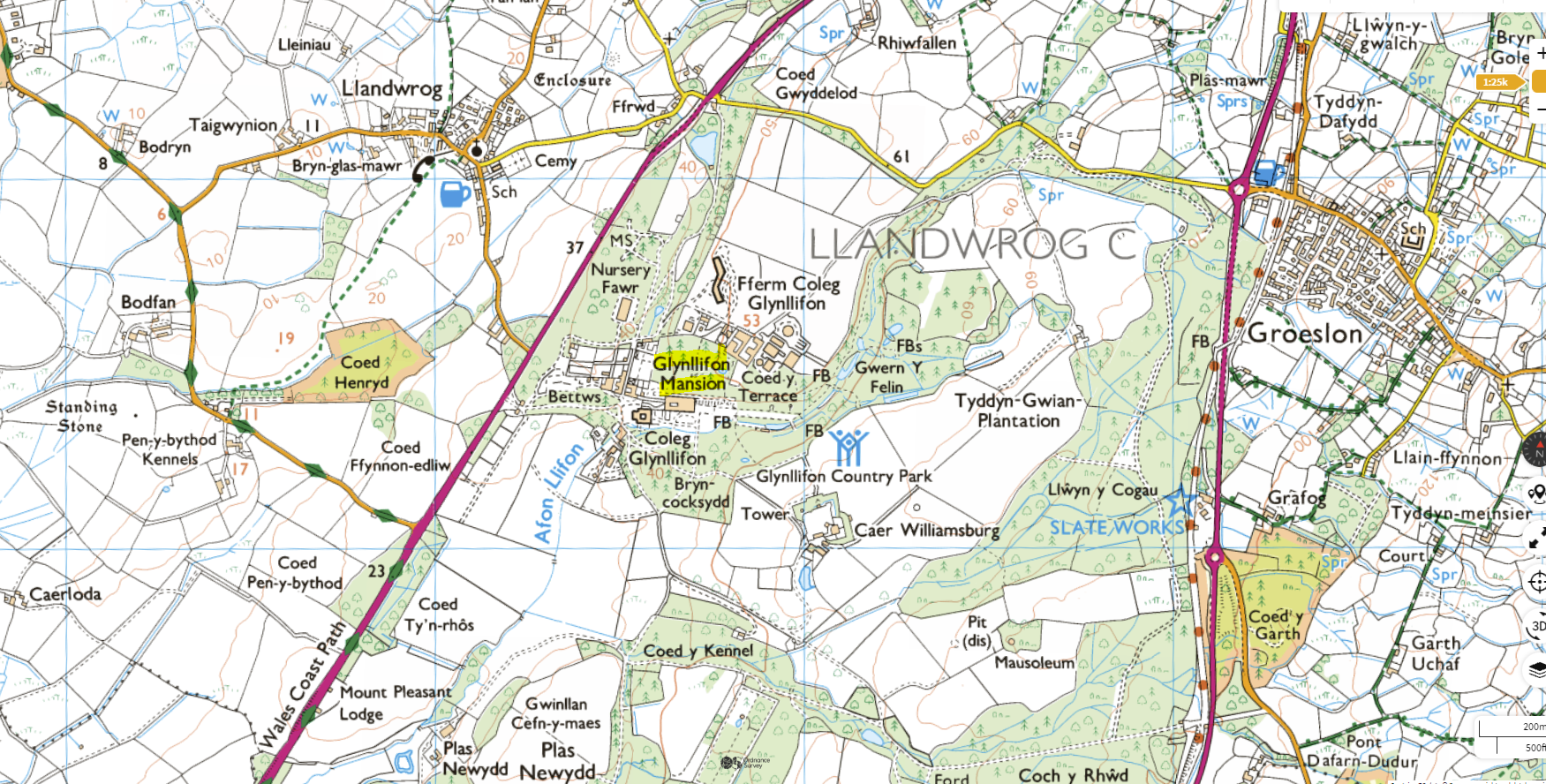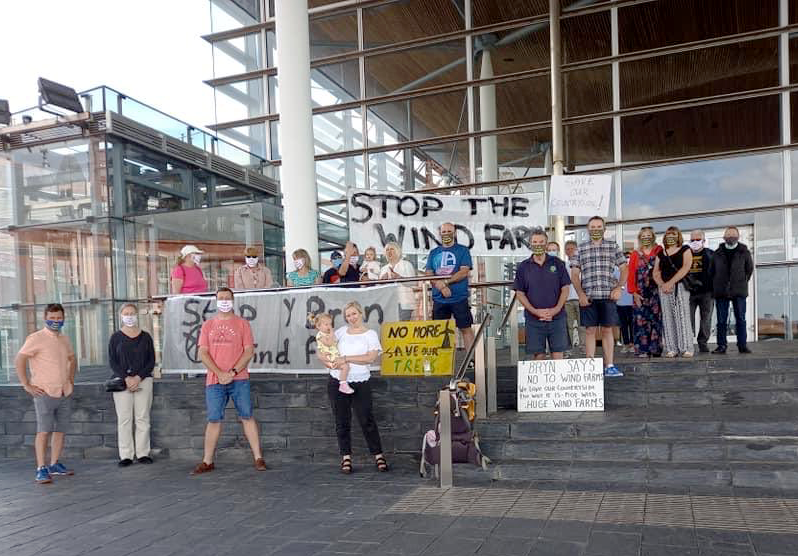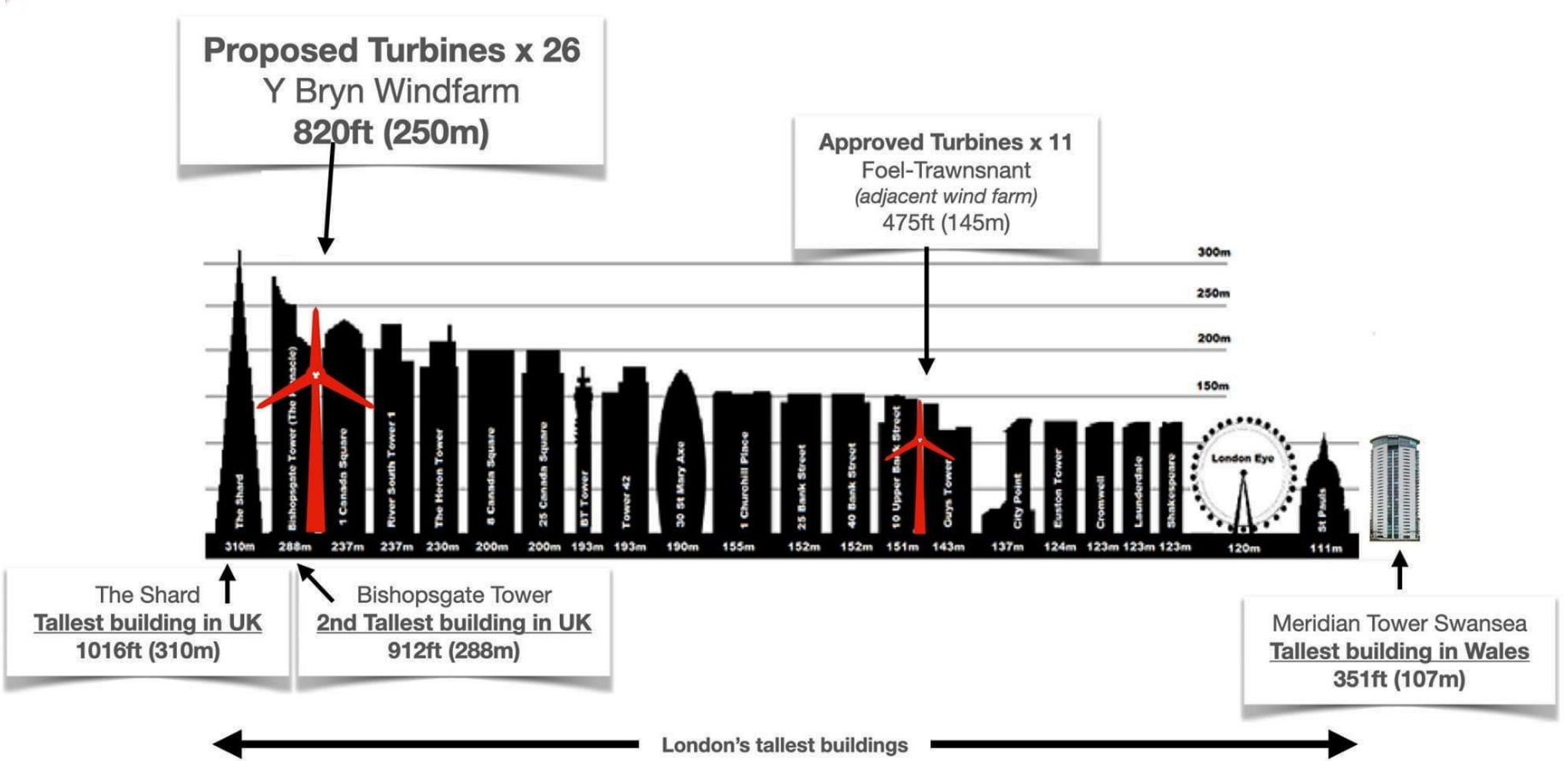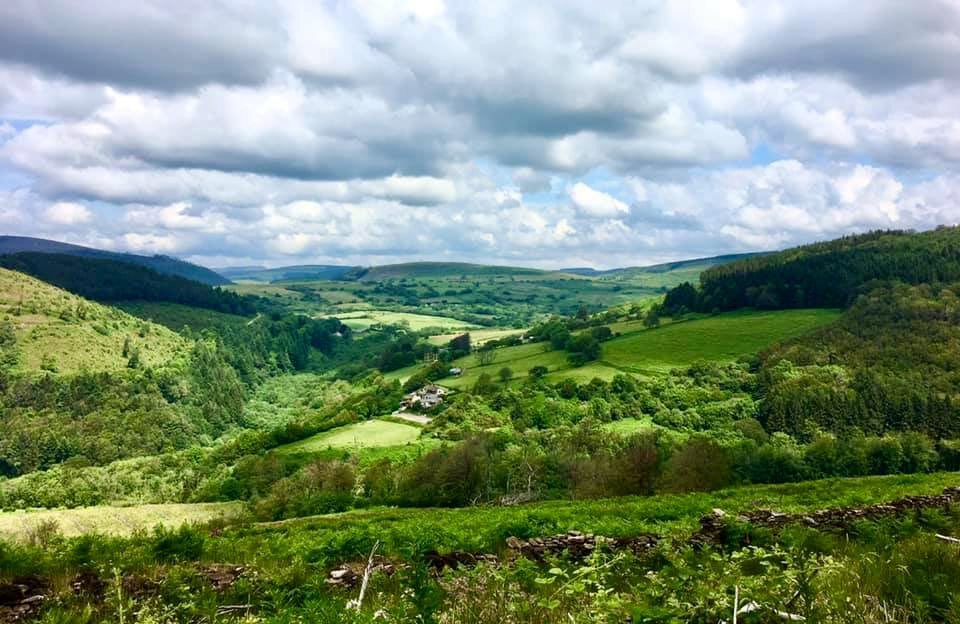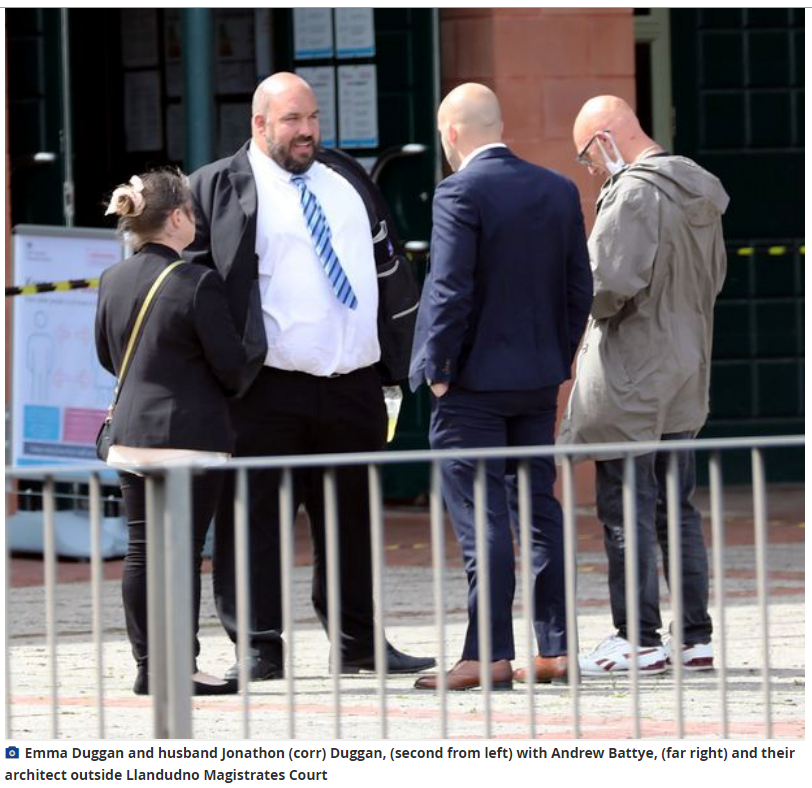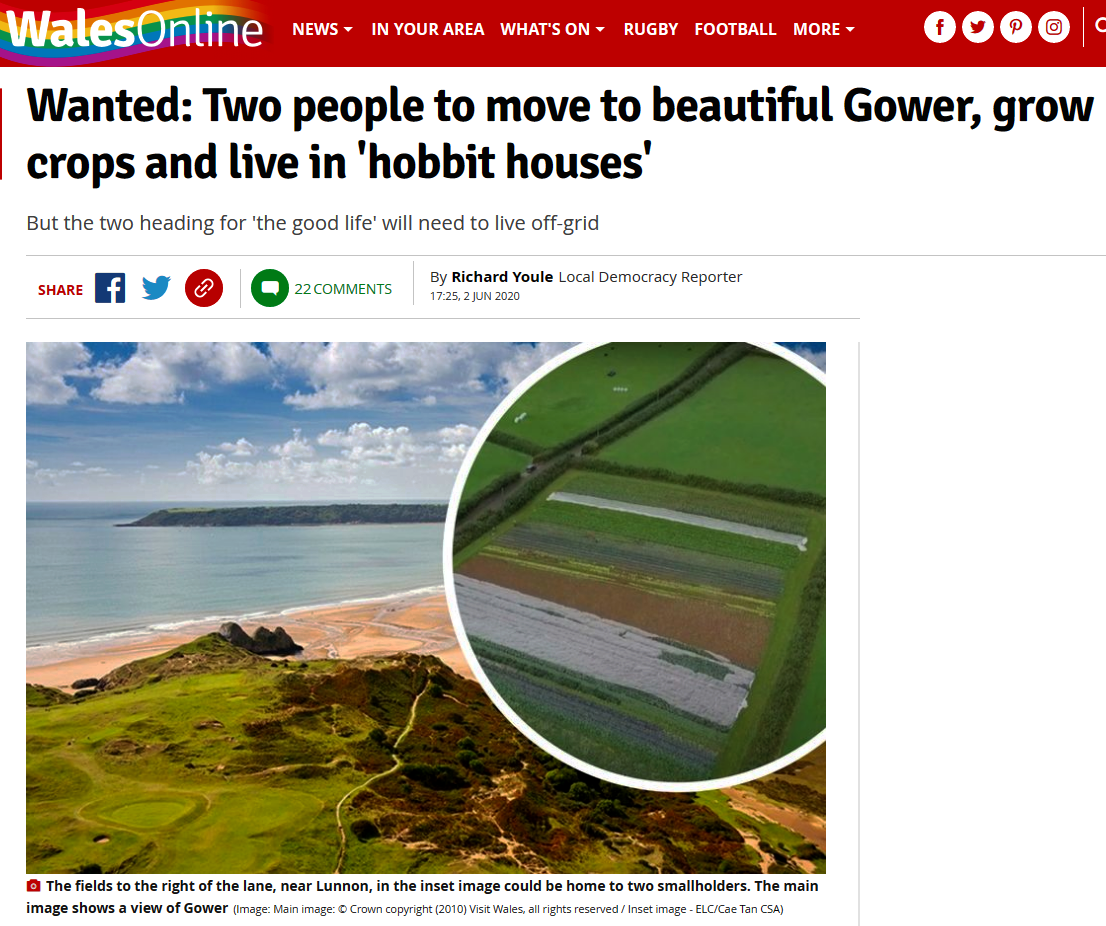![]() The piece you’re about to read poses as many questions as it provides answers. Which is unavoidable given the subject’s complexity. But as great-aunt Fastidia said when she organised Mussolini’s March on Rome – “You gotta start somewhere, Benny”.
The piece you’re about to read poses as many questions as it provides answers. Which is unavoidable given the subject’s complexity. But as great-aunt Fastidia said when she organised Mussolini’s March on Rome – “You gotta start somewhere, Benny”.
As an aperitif here’s a guest piece on this blog from 2016, just scroll down to the section ‘Golden Grant’.
◊
BRIEF HISTORY
Golden Grove / Gelli Aur lies to the south west of Llandeilo. If we look at the map below we’ll find it in the bottom left quadrant.
The area immediately to the west of the town, shaded grey, is the Dinefwr estate, once home to the Rhys / Rice family, descended from The Lord Rhys. It’s now owned by the National Trust; with the castle ruins in the care of Cadw, and the woodlands entrusted to the Wildlife Trust of South and West Wales.

Another parcel of our land given over to people who think we Welsh are in the way.
Just down the road, Gelli Aur belonged to the Vaughan family, who claimed descent from the princes of Powys. They were a colourful bunch, experiencing their ups and downs; wealthy brides and royal favour to bankruptcies and beheadings.
The Vaughans became the Earls of Carbery. One was made Governor of Jamaica in 1674, with an even more colourful Welshman as his deputy. He was described by Pepys as “one of the lewdest fellows of the age”. Wow!
In 1804 the last John Vaughan died childless, and although there were many Vaughan relatives, including his sister, the estate passed to his friend, John Campbell, Earl Cawdor, who conveniently appeared with a will naming him heir.
Despite the obvious Scottish connection – with Nairnshire – Campbell’s mother was a Pryse of Gogerddan.
That’s enough nobs’ history. Let’s join the twenty-first century.
◊
INTRODUCTION
After trying to set this out in the order suggested by Land Registry titles, and realising there was too much cross-referencing, I decided to go for chronological order dictated by those who’ve been involved at Gelli Aur over the past 20 years or so.
If I’ve missed anyone, then please get in touch, tell me your details, especially how much public funding you trousered.
Let’s start by saying that title number WA883292 ‘Golden Grove Mansion’, seems to have as its Registered owner, Carmarthenshire College of Technology and Art. Which makes sense as there is an agricultural college at Gelli Aur.
◊
GELLI AUR LTD
The first outfit we’re going to look at is Gelli Aur Ltd. Formed 30 April 2001 and after lingering for years, finally departing this mortal coil in December 2010, leaving behind a stack of debts. Though a voluntary liquidator was appointed as early as July 2003.
The leading player in this company was Jeffrey Paul Thomas, based in the small town of Corsham, a mile or so from Chippenham, in Wiltshire.
Over the years Thomas has had many companies to his name.
At the demise of Gelli Aur Ltd there were three outstanding charges, two with Coleg Sir Gar, and one with the Welsh Development Agency. These were created just a year before the liquidator was appointed.
If you go to the ‘Filing History’ tab for Gelli Aur you’ll see, dated 29.03.2003, ‘Statement of affairs’ issued by the liquidator. I have extracted the final page and highlighted the debts with Welsh entities. (Here in pdf.)

Among the non-Welsh creditors you’ll see Alkemi Group Plc, since re-named Alkemi Ventures Plc. Set up in February 2002, less than a year after Gelli Aur Ltd.
Alkemi was wound up April 2004 following a petition by the Commissioners of Inland Revenue. Here’s the relevant document. And finally dissolved in December 2010.
Yet in its brief spell on this Earth Gelli Aur Ltd managed to incur a debt of £685,347.00 with equally short-lived Alkemi. And bless me! – both companies were owned by Jeffrey Paul Thomas.
To claim when a company you own or owned goes belly-up that it owes you or another of your companies hefty sums is often a way of salvaging summat from the wreckage.
Who can forget how Paul and Rowena Williams of Plas Glynllifon claimed to be owed £11.75m when the company they’d passed on to an accomplice hit the rocks. Oh, how we laughed!
With Gelli Aur Ltd out of the picture the old pile was ready for the next ‘improvers’.
◊
DIGRESSION 1
Though we see, picking up one of the pieces (from the liquidator), Golden Grove Estates Ltd, launched 24 October 2003, and which in April 2005 changed its name to Wingwest Ltd.
This company took over the Gelli Aur Ltd charge on the mansion. Here’s the relevant document. It was cleared in January 2007.
It makes sense because if we go back to the list of Welsh creditors we see ‘Stradform Ltd’ of Cardiff. Owed £317,000. The directors of Golden Grove Estates Ltd were also directors of Stradform.
We learnt at the start of 2008 that Stradform had been taken over for £7m.
Stradform was dissolved in October 2020.
◊
BRIMASTON LTD
The title document linked to in the Introduction says: ‘Title closed (15.08.2002) – registration continued under CYM85255’. This title number refers to ‘Land to the east of Golden Grove Mansion’.
The registered owners of this title are Brimaston Ltd. A company Incorporated 16 September 2003, giving its address as 89 Hill Street, Haverfordwest. Its stated line of business was ‘Development of building projects’.
I use the past tense because Brimaston was Dissolved in May 2014. With no less than seven outstanding charges, all with Barclays Bank.
The first four were for Pembrokeshire farms, one fixed and floating charge, and then two relating to Gelli Aur. One for the mansion itself, the other for the West Lodge.
Unfortunately, none of the documents that would give more details about the charges are available on the Companies House website.

From what I can see Brimaston was a company formed by the kind of people who move to Wales to run the ‘Welsh’ tourism industry. The farms they bought were to be used for ‘holiday barns’ and the like. Frightfully twee.
It seemed to go wrong when one of those involved succumbed to Parkinson’s, poor bugger, and perhaps when they realised that with Gelli Aur they’d bitten off more than they could chew.
Brimaston was struck off in May 2014.
On the Brimaston title document CYM85255 we read that it’s closed, and we are referred to CYM85254.
We’ll pick this up again in the section ‘Golden Grove Trust’.
◊
DIGRESSION 2
Although they invested no money in Gelli Aur, interest was shown by a group from Bridgend who wanted to turn the old house into a home for ex-servicemen.
The Golden Grove Mansion Appeal Ltd was formed in December 2009 and, after a couple of name changes, was finally dissolved in December 2021.
It would appear that nothing came of it. Despite a lot of pennies being collected.
To complicate matters further, this entry on the Charity Commission website says the charity Healing The Wounds Ltd (the current name) is removed from the Charity Commission register, but is still raising funds.
Or am I reading it wrong? Your guess is as good as mine.
◊
GOLDEN GROVE TRUST
As we can read: CYM85254 ‘Gelli Aur Country Park, Golden Grove’ was transferred 16 September 2011, for £1,360,000, to the Golden Grove Trust (then of London). (Other title numbers mentioned in CYM85254 refer to: Cilsane Isaf Farm, Allt y Wern, Golden Grove Home Farm.)

Golden Grove Trust came in the form of art historian Richard Christopher Salmon and pointillist William Powell Wilkins. There is also a Golden Grove Trust charity.
Wilkins the Dots was gone by March 2013, but Salmon hung on until June 17 last year. Though David Nicholas Salmon, who I suppose is related, didn’t cease being a director until the 10th of this month.
I don’t want to get bogged down here, or to repeat rumours, but as you read in the guest piece from 2016, a considerable amount of public funding went into Gelli Aur when Salmon was there and people still ask what happened to it.
What I can tell you is that Salmon’s departure from Gelli Aur last June links with his being declared bankrupt in April.
The most recent (and very brief) accounts available were made up to 31 August 2022. The asset of £2.5m has to be the main house, etc., with the overall figure reduced to £1.5m by liabilities and debts.

Those liabilities will be the three outstanding charges on: the mansion, the West Lodge, plus a floating charge over the whole shooting-match.
The charge against the East Lodge was paid off last October, after Salmon’s departure, and the name given on the statement of satisfaction was Hendrik Jan Smit.
Before leaving this section I should also mention Golden Grove Ventures Ltd. Which never ventured far, with the latest accounts showing a deficit of some £28,000.
This too has been taken over by the new boys.
◊
SINGH AND SMIT
If we go back to the directors tab for Golden Grove Trust we see there are now three directors. These are, Smit, who I just introduced, Daljit Singh, and Bronwen Jones.
All give as their correspondence address, ‘Cwrt-Y-Gorffwys, Golden Grove, Carmarthen’. Cwrt-y-Gorffwys was bought in September 2022 for £535,000 by Daljit Singh. And it looks like a cash-down purchase.
And it seems to be a substantial gaff, with some land,. To get there you take the A476 (the Cross Hands road) from Ffairfach, turn off at Park Lane, and you’ll find Cwrt-y-Gorffwys after passing Thomas Motor Repairs.
The only extant company I can find with which Daljit Singh is involved is Ubiq Associates Ltd. The accounts suggest a tuppenny-ha’penny outfit, needing neither accountant nor auditor to help with the figures.
Although Dutchman Smit is not named as a director, he is a Ubiq shareholder. Dr Smit is from the School of Experimental Psychology at Bristol University.

Now they’re trying to raise money. Though I’m not sure a Crowdfunder will raise the kind of sum Gelli Aur needs.
But we still don’t know why they rocked up at Gelli Aur in the first place. So here’s a shot in the dark. (And if I hit anybody I’ll plead insanity, as always.)
Singh and Smit have no obvious background in property development, and I’m fairly sure they have no experience in tourism, so why would they want a big old house far from their home area?
That home area being Bath / Corsham / Chippenham, the same as Jeffrey Paul Thomas of Gelli Aur Ltd. So maybe they know Thomas. Or is it just a coincidence?
◊
DIGRESSION 3
Next we have CYM409991 ‘The Golden Grove Estate’. (Not to be confused with Golden Grove Estates Ltd, which we encountered in Digression 1.)
This company files as dormant, and is controlled by Sir Edward John Francis Dashwood. If the name sounds familiar it’s because an ancestor was the notorious Francis Dashwood of the Hellfire Club.
But this title is separate to the mansion and, I suspect, it’s grounds. It refers to land between Golden Grove and the Dinefwr Estate, offering sporting rights. Those rights extend to other titles, with more than 10 miles of sewin fishing on the Tywi.

The estate was on the market a few years ago, but did it sell? Apparently not. Unless the new owner has neglected to inform the Land Registry.
◊
ADFER GELLI AUR CIC
Finally, we have Adfer Gelli Aur CIC. Which I thought would be another digression . . . until I looked into it.
As the name suggests, it’s a community interest company, formed as recently as April last year. It started with eight directors, but four quit 27 August.
I’m sure many of you’ll be familiar with a community interest company. In my experience, they’re set up to serve a village, or a rural area, or even for a specific project, such as a local hydro scheme.
With beneficiaries numbered in the hundreds, or at most, a few thousand. But when I checked the Certificate of Incorporation for Adfer Gelli Aur, I saw this:

I said to myself . . . “Jac, my boy, that capitalisation must refer to the legislation of that name.“ But what does it all mean?
It becomes clear in the same document, under ‘Objects’:

Elsewhere on the document we read that the agent for the CIC is Cwmpas (formerly Wales Co-operative Centre), much favoured by the ‘Welsh Government’, with 100 employees and an annual turnover in excess of seven million pounds.
Coincidentally, the new Future Generations Commissioner is Derek Walker who, until February last year, was the head of Cwmpas. Small world, innit!
The involvement of Cwmpas and the references to Future Generations suggest that Adfer Gelli Aur CIC might be the vehicle through which the ‘Welsh Government’ takes control of the Golden Grove mansion and grounds.
If nothing else, buying Golden Grove through a CIC might avoid the kind of bad publicity generated by the purchase of Gilestone farm at Talybont-on-Usk.
If so, then we can assume that a great deal of public money will be involved.
Though if Adfer Gelli Aur CIC is taking over, where does that leave Smit and Singh?
◊
CONCLUSION
What’s seems to be proposed with Adfer Gelli Aur CIC shows up yet again a widespread and ongoing problem in Wales.
I can understand the desire to keep Gelli Aur / Golden Grove out of the hands of people like those you’ve been reading about. And I have no objection to it belonging to the nation. But a CIC is not the way to go about it.
Wales needs an organisation like the National Trust to own and safeguard all our important sites. Nothing shows that need better than the disgraceful state of Sycharth, site of Glyndŵr’s home.
∼
Finally, let’s not forget the Barbour and tweed brigade. What does Future Generations legislation say about huntin’ shootin’ fishin’?
♦ end ♦
© Royston Jones 2024












